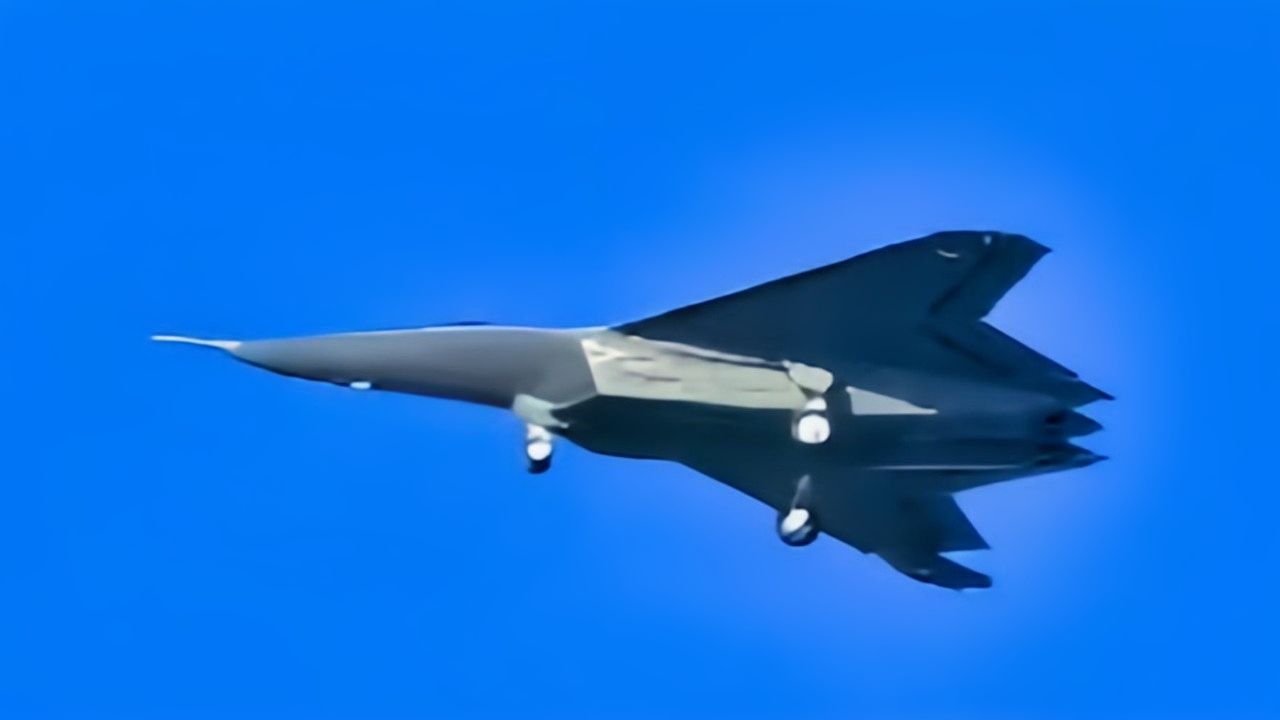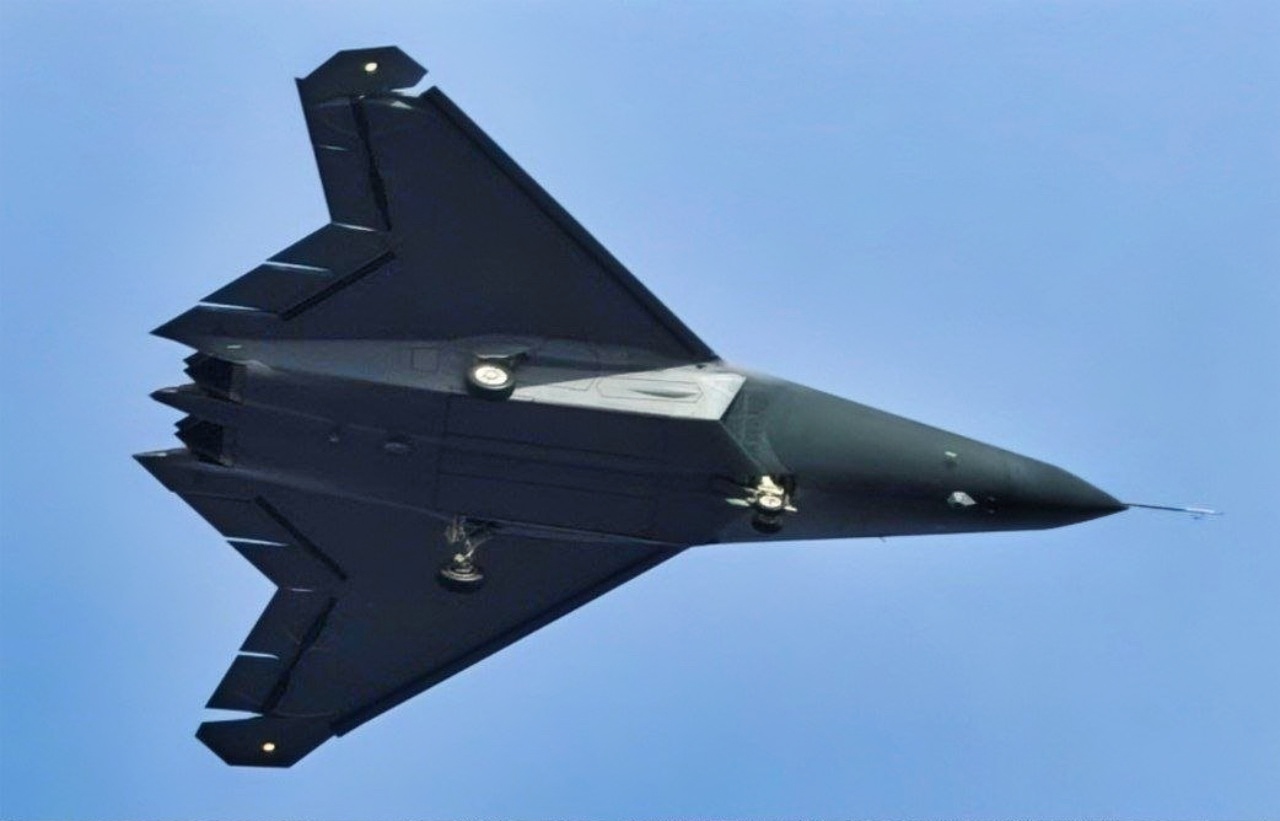Key Points: New, clearer photos offer insights into China’s purported Shenyang J-50 sixth-generation stealth fighter, first spotted in late 2024.
-The images reveal advanced design features like a tailless configuration, lambda wings, articulating wingtips, and potential thrust vectoring, aimed at achieving air superiority and low observability. Speculation includes AI integration and potential carrier capability.
-While this demonstrates China’s rapid progress in advanced fighter development, analysts caution the J-50 is likely in early stages, years behind US NGAD prototypes (like the F-47).
-Its exact role—prototype, demonstrator, or future production aircraft—remains uncertain.
J-50 Designed to Beat the U.S. Military in a War
China has been busy churning out naval ships and aircraft, and two new sixth-generation fighters are going through flight testing. The latest is the J-50, which has appeared in new photos that offer closer looks at its design. The aircraft is one of two Chinese tailless heavy next-generation fighter designs that emerged on the day after Christmas 2024.
Numerous blurry photos of the aircraft, built by Shenyang Aircraft Corporation, were taken in December, making design analysis difficult. Still, recent photos that are much clearer have surfaced. Whether or not that was a deliberate effort by China remains unknown. However, the aircraft remains another one of China’s ongoing megaprojects.
Design of the J-50
The J-50’s design suggests that several technologies aim to achieve dominance in air superiority scenarios, network-centric operations, and survivability in heavily defended airspace.
The fuselage’s shape minimizes radar visibility. The aircraft exhibits characteristic stealth design elements, including sharp angles, smooth surfaces, and the absence of protruding antennas or visible points of radar reflection, including a lambda wing.
The Aviationist posted a detailed analysis of this wing.
“The lambda wing itself already provides advantages, as this planform increases the aspect ratio and improves the aerodynamic efficiency over a trapezoidal planform, such as the ones that Shenyang already used on the recently introduced J-35, while still complying with the constraints imposed on wing design by low observability requirements. However, the broken trailing edge degrades the structural efficiency and increases the wing’s weight.”
The J-50 is also believed to incorporate artificial intelligence [AI] for flight management, allowing for autonomous analysis of combat scenarios, target identification, and tactical decision-making. This automation frees the pilot from routine tasks, enabling a focus on strategic mission control.
One intriguing feature—the aircraft’s articulating wingtips—is visible, with the right wing’s tip deflected. Two-dimensional thrust vectoring exhausts are also visible.
A two-wheeled nose landing gear with single wheels for the mains is confirmed. While not new, it reinforces the difference between this design and Chengdu’s heavy design, which features twin wheels for its main gear arranged in tandem.
If the J-50 is designed for aircraft carrier operations—given China’s investment in catapult-equipped aircraft carriers such as the Fujian (Type 003)—it could significantly improve China’s ability to conduct blue-water operations.
This capability would give China’s People’s Liberation Army Navy (PLAN) a true sixth-generation capability at sea, closing a gap with the US Navy’s F-35C and future Navy NGAD systems.
The photos capture just a very slight glimpse of the aircraft’s canopy. However, they don’t allow for a closer inspection of how the canopy blends into the aircraft’s fuselage.
Has China Moved Ahead of the US in Stealth Technology?
When the two aircraft (J-50 and J-36) made their first test flights, many analysts concluded that China had overtaken the US in sixth-generation stealth fighter development. But that isn’t true since the US has been secretly flying stealth fighter prototypes by Lockheed Martin and Boeing for years in a California location.
Although both of these aircraft are making their first initial flights in December, without any official Chinese announcements, this appears to be in the infancy of its development stage.
For instance, the J-20 conducted its first flight in 2011 but didn’t become operational until 2017, six years later. The same thing occurred with the J-35, which first flew in 2012 but isn’t expected to be operational until 2026.

J-50 Fighter from China. Image Credit: Creative Commons.
Alex Hollings of Airpower made the point that it is unknown whether these aircraft are the equivalent of American NGAD aircraft or experimental aircraft that are never meant to go into service but rather serve as testbeds for emerging technologies to be integrated into later designs.
Or they could be prototypes of new fighters meant to enter service in a similar form to how they look today. However, even prototypes often see significant design revisions before making their way into service when developing new technologies.
According to former Air Force Assistant Secretary Will Roper, the US flew its first NGAD fighter prototypes in 2020, which had already set some performance records. President Trump just recently awarded Boeing the contract to begin producing the F-47.
However, whether the J-50 is a prototype, a testbed, or an early production model, it confirms that China is progressing in every avenue of air warfare development. The development pace, coupled with its design’s sophistication, suggests that the strategic and technological race for sixth-generation dominance is now fully underway. And while the US remains ahead, the ultimate ending is far from assured.
About the Author:
Steve Balestrieri is a 19FortyFive National Security Columnist. He served as a US Army Special Forces NCO and Warrant Officer. In addition to writing for 19FortyFive, he covers the NFL for PatsFans.com and is a member of the Pro Football Writers of America (PFWA). His work was regularly featured in many military publications.

